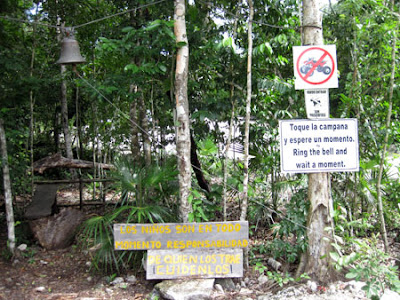Sunday we spent an exquisite day sailing and snorkeling off the Coco Luna Catamaran. Owned by our great friend, Scottie, and named after her condo at The Elements, it was one of the most fun days we have spent in
Playa del Carmen. I think you'll see us doing a lot more ocean activities over the next few months.
A few months ago when Scottie started mentioning to me about possibly purchasing a used boat, I skeptically went along with the idea. How often would she use it? Was it a good use of money? Perhaps she was better off renting one. However, since hearing the stories of how much fun she is having on the boat, I have completely changed my mind. Scottie's purchase of the catamaran is quite possibly the best thing that has happened to humans since the advent of chocolate mousse. When Scottie asked us to join her for a sail on Friday, Allan and I made sure to first say "yes", then to keep our schedules clear and lastly to show up on time (a chronic problem for us) so we would not miss a single second.
We arrived at The Elements Beach Club on Sunday at 1pm (on time) to meet Scottie and her squeeze Jim. For me it was just one of those perfect days with clear blue skies, shimmering turquoise seas and calm waters. Sailors would wish for more waves and wind, but not me. I get sea sick quite easily. Regardless I was not going to let that stop me or anyone else from having a ball.
Scottie and Jim were already sailing when we arrived, taking a lesson from a local named Emilio whom everyone says is a complete hunk. I will leave that judgment up to you. (Photo is below.) The free moment gave Allan and me time to relax a while - Allan chatted with our client, Carla, a condo owner who is down for the month, while I took a dip in the water to cool off. In no time the Coco Luna pulled up to shore, and it was time for Allan and me to board.
The sail was an absolute joy - very relaxing. We lazily chatted and soaked up the sun's warm rays as Emilio expertly guided us to the reef just off Coco Beach. I marveled at the water's varying shades of blue - from the traditional turquoise color near shore to an almost glacial blue color in deeper waters.
The reef rests just below the water's surface in about 12 feet of water, 1000 feet out from shore. It starts out where we were and then parallels the beach, stretching about 1/2 mile, reaching closer to the coast at its far point. Donning our snorkeling gear, we splashed in for our underwater adventure and were amazed at how warm the water was. We could have stayed in all day.
We gracefully glided through the water, past large brain coral, colorful fish and creative coral formations, trying not to trample on and damage the reef. Fish darted in and out of view, acting as if we were predators searching for a meal. Admittedly I did want to consume their aura in photos and videos, but I'll leave eating raw fish to sushi bars.
We stayed in the water for about an hour, then boarded the boat (some gracefully, others less so) and began our zip-zag sailing pattern back to The Elements, completely dependent on the wind. On the way as we reached really deep water, the ocean turned a marine navy color. Emilio pointed out this is where the ocean drops to past 300 feet. It's a scary feeling to think about just how profound deep water really is. Anchored close by a 83 yacht emitted cool electronic music as on board passengers waived to us as they jumped up and down to the beat. Allan and I immediately fell in love with the streamlined structure, wishing we too could voyage on the open seas in such a posh vessel, even if I do get sea sick. It would be worth it.
Our sailing adventure ended after roughly 2 hours of sheer joy. We helped to pull the ship on shore, and then headed back to the Elements Beach Club where our friend Marilou met us. Lounging around on the beach for another hour or so we read, enjoyed Scottie's salsa and chips and made plans with Marilou later that evening for dinner.
We've found the longer we stay in Playa, the more friends we make and the deeper our existing friendships have become. Each week offers a new adventure whether it be sailing, snorkeling, a cenote or a surprise. Contently we approach each day, happy with our lives and excited for what new encounters we'll experience in this sunny enclave called
Playa del Carmen.
 |
| Jim and Allan and the Coco Luna Cat |
|
|
 |
| Allan gets ready to jump in |
|
|
 |
| Jim and I enjoy the ride |
|
|
 |
| Emilio, our captain |
|
|
 |
| Allan snorkeling |
|
|
 |
| Brain coral |
|
|
 |
| The reef and sea life |
|
|
 |
| Colorful fish |
 |
| I loved this blue fish with florescent dots |
|
|
 |
| Another neatly designed fish |
 |
| A view of where we snorkeled and the boat anchored next to ours |
|
|





































